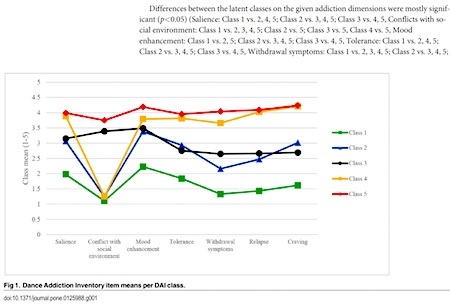An empirical investigation of dance addiction
Dancing is mentally dangerous, suggests this new study, which is a further advance in our understanding the threats posed by addiction:
“An Empirical Investigation of Dance Addiction,” Aniko Maraz [pictured here], Róbert Urbán, Mark Damian Griffiths, Zsolt Demetrovics, PLoS ONE 10(5), May 7, 2015, e0125988. (Thanks to Neil Martin for bringing this to our attention.) The authors, at Eötvös Loránd University, Budapest, Hungary, and at Nottingham Trent University, UK, explain:
Little is known about the harmful effects of excessive dancing. The aim of the present study was to explore the psychopathological factors associated with dance addiction. The sample comprised 447 salsa and ballroom dancers (68% female, mean age: 32.8 years) who danced recreationally at least once a week. The Exercise Addiction Inventory (Terry, Szabo, & Griffiths, 2004) was adapted for dance (Dance Addiction Inventory, DAI)…. DAI was positively associated with psychiatric distress, borderline personality and eating disorder symptoms…. Dance addiction as assessed with the Dance Addiction Inventory is associated with indicators of mild psychopathology and therefore warrants further research.
Co-author Mark Griffiths is noted for his ongoing relation to addiction and gambling.
Here’s further detail from the dancing addiction study — a graph that clearly indicates the production of data:
BONUS: An earlier, less academically turgid investigation of dancing addiction — a 1987 film called “Dirty Dancing”:

Marc Abrahams's Blog
- Marc Abrahams's profile
- 14 followers




